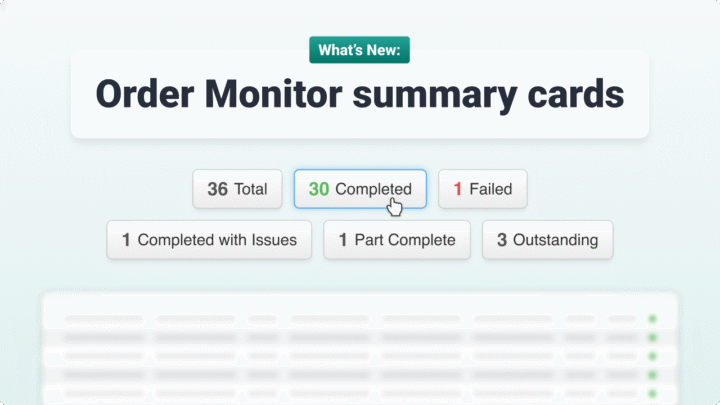The busiest time of the year for retailers is upon us.
And for those that are unprepared, the festivities may have to be put on hold.
Gone are the days of Black Friday being a singular, one day event. Some Black Friday sales now extend across weeks well into December in order to tempt holiday shoppers into parting with their cash.
With Cyber Monday and Boxing Day sales also added into the mix, retailers are presented with significant logistical challenges as demand peaks in most sectors during this period.
Black Friday sales statistics put the surge in demand retailers can come to expect into perspective.
European retailers hit a peak of 11.4 orders per second on Black Friday in 2024, a 205% jump over regular retail sales periods.
That’s a serious amount of demand, especially for online retailers.
Cue Linnworks’ ‘Overcome Peak Season Red Flags’ guide, where they analysed common ‘red flags’ (warning signs) retailers will inevitably have waved in their direction this peak season and beyond.
Operational efficiency, sales channel alignment, and marketplace performance significantly determine peak season success, and these are three key areas, or ‘red flags’, in which most retailers tend to leave most room for improvement.
Eliminate inefficiencies that drain time and resources
First red flag: Manual processes, such as copying order details, managing shipments one label at a time, and juggling spreadsheets for stock or delivery updates or information, quickly spiral out of control during peak season, reducing productivity and increasing errors.
Strategy: Use integration(s), automation, and digital solutions to centralise logistics processes.
In an increasingly online and digital world, eliminating inefficiencies requires automating repetitive tasks and streamlining workflows, ideally with as little manual input as possible.
The aim of the game is to free up staff time and resources so that they can focus on other areas of the business.
Here are a number of ways in which this can be achieved in a logistics operation and why it is paramount for retailers to consider implementing them in time for the peak season rush.
Automate repetitive fulfilment and delivery tasks through integrations
Connecting your backend systems with one another to create an ecosystem built for efficient fulfilment can make or break your peak season.
A Transport Management System (TMS), such as Stream, for example, can integrate with Linnworks and other e-commerce, Inventory & Order Management, and Enterprise Resource Planning (ERP) systems, to automatically push orders to Stream, ready to be planned for delivery.
This eliminates the manual process of laboriously creating individual shipping labels or copying order details.
Laura Barber, Partner Manager at Linnworks explains:
“During peak season, operational agility becomes a competitive advantage. Linnworks gives retailers the ability to automate at scale, reducing manual workload and eliminating the inefficiencies that can lead to shipping delays, stockouts or missed sales opportunities.
“With centralised order management, retailers can view and process all orders from every marketplace and webstore in one platform, streamlining workflows and ensuring no order is missed. Automated rules determine the optimal fulfilment location, carrier or service level based on delivery promises, allowing for faster dispatch times without manual oversight.
“When systems are in sync, passing data between one another to boost efficiency and help high-volume businesses cope with an influx in demand this peak season.
“Real-time inventory syncing across all connected channels ensures that stock levels are always accurate, protecting against overselling and keeping listings active even as volumes surge. Linnworks’ shipping integrations further simplify label creation, carrier selection, and tracking updates, automating repetitive steps so teams can focus on strategic growth instead of order administration.”
Streamline deliveries with route planning and optimisation
For retailers that deliver goods in their own vehicles, a comprehensive TMS is essential to not only streamline your delivery processes, but provide superior customer service.
Orders that have been processed and fulfilled through systems like Linnworks can be assigned to a delivery run, drivers and vehicles assigned and then routes optimised.
Business-boosting features such as route planning and route optimisation, which calculate the most efficient multi-drop delivery routes, amount to a significant time saver compared to manual route planning, and tackle key inefficiencies retailers face throughout the last mile.
Pro tip: Retailers who automate repetitive tasks and centralise their order management have reported up to a 30% increase in processing efficiency and a reduction in fulfilment errors by up to 50%.
Align marketplace channels to a unified strategy & customer experience

Second red flag: Your marketplace listings, promotions, and pricing are inconsistent or managed separately. This can cause pricing errors, conflicting offers, and missed revenue opportunities.
Strategy: Data synchronisation via integrated marketplace systems.
Channel alignment is vital for a seamless, consistent customer experience.
For retailer’s, it’s recommended that they utilise software that integrates directly with marketplaces to align incoming and outgoing data, ensuring consistency in the final, crucial step: delivery.
Centralise product and order data
While Stream is a Transport Management System, its integration with stock & order management platforms like Linnworks play a key role in centralising product and order data.
“In short, Linnworks provides the scalable, connected infrastructure that allows retailers to handle higher order volumes with ease, maintain top performance metrics and deliver the consistent customer experiences that drive repeat purchases, especially during peak trading periods.” – Laura Barber, Partner Manager at Linnworks.
These integrations ensure that order details flow automatically and accurately, which prevents delivery errors caused by manually transferring information across disparate systems.
Synchronise delivery information and notifications
An aligned strategy means a consistent customer experience, especially post-purchase.
Stream automatically provides:
- Automated delivery notifications to customers via email and SMS, triggered by events in Stream.
- Real-time delivery tracking which customers can access via a unique tracking URL, providing the same high level of visibility regardless of the sales channel they purchased from.
Pro tip: A unified approach, enabled by connected systems, translates to a better experience for both customers and internal teams.
Ensure marketplace strategies are fit for demand
Third red flag: Your products have low visibility listings on major marketplaces like Amazon and eBay, leading to missed sales opportunities and poor returns on advertising spend.
Strategy: Leveraging logistics to boost seller metrics, visibility, and positive reviews.
Marketplace visibility is heavily influenced by seller performance metrics, particularly fast and reliable shipping. Through integrating Stream with a marketplace, such as Amazon, retailers can optimise the delivery performance required to achieve those top metrics:
Prioritise seller metrics with delivery excellence
Marketplace algorithms favour sellers with high performance. Stream’s features directly improve the logistics aspects of these metrics:
- Fast shipping options: Stream enables you to plan efficient routes quickly using route planning and route optimisation, which can help you meet the criteria for fast-shipping badges like Amazon Prime for your self-delivery orders, achieved through Amazon’s Seller Fulfilled Prime programme.
- Valid tracking updates: Integrating Stream with marketplaces automatically provides valid tracking updates for self-delivery orders, helping to fix Vendor Tracking Rate (VTR) violations and reduce A-Z Claims.
- Prompt customer service responses: Real-time delivery tracking and instant Proof of Delivery (ePOD) capture provide customer service teams with all the necessary information, allowing them to resolve delivery issues quickly.
“Modern marketplace algorithms prioritise sellers who deliver exceptional customer experiences. Linnworks empowers retailers to meet and exceed these expectations by centralising and automating critical operational processes across major platforms such as Amazon, eBay and TikTok Shop.”
Highlight fast shipping options
By optimising your own fleet logistics with a Transport Management System, you can control the delivery experience and offer more reliable and faster shipping options.
Monitor and refine for performance
Stream’s Logistics Monitoring allows you to track driver progress and compare planned versus actual delivery ETAs, which is essential for consistent and reliable delivery performance – a core factor in maintaining a high seller rating and visibility.
Pro Tip: Retailers who use enhanced content and qualify for fast-shipping filters see up to a 15% increase in visibility and conversions during peak periods.
Conclusion
The peak season rush presents an opportunity for growth, but mainly for retailers that are ready to handle an influx in demand.
The three major red flags – inefficient manual processes, misaligned sales channels, and underperforming marketplace strategies – are all signals that your current setup won’t withstand the rigorous challenges of peak season.
The solution isn’t simply working harder; it’s working smarter.
By leveraging integrations to knit together your inventory, order management, and logistics systems, you automate repetitive tasks, ensure data synchronicity, and boost order metrics.
A cohesive, connected ecosystem, exemplified by the benefits of connecting Stream’s TMS system with Linnworks and leading marketplaces, is essential for turning the potential chaos of peak season into a successful one.
Don’t let this year’s peak season be defined by errors and lost sales. Tackle red flags head-on by investing and prioritising operational efficiency in order to promote growth throughout peak season and beyond.



